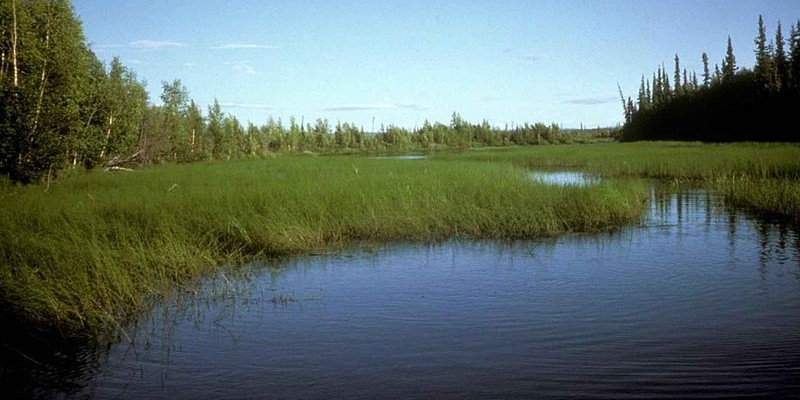Write a blog that hyper-links your research on the characters in GGRW according to the pages assigned to you. Be sure to make use of Jane Flick’s reference guide on your reading list. Discover the connections inside the allusions.
I’m using the 1999 edition of Green Grass Running Water (pages 410 to 418). 1993 edition pages 342 to 350.
This section starts with Clifford Sifton, Bill Bursum, and Dr. Joseph Hovaugh quite calmly remarking on the earthquake. I’m going to focus on them, in comparison to the other groups of characters in these pages and their reactions to the earthquake. I’m most interested in King’s very strong critiques of Western colonizers that come through here.
It’s interesting that these three men are not excited about the earthquake. King writes their reactions as normal statements, with no exclamation marks, although they do “yell” (410). Compared to them, Coyote is much more excited at the earthquake. These three characters are put together in one group, all with the same reaction to the earthquake. So who are they?
Clifford Sifton is a very literal reference to a historical figure who “promoted” and “championed” western settlement and displacement of Aboriginal peoples on the prairies (Flick, 150). A few pages later in this section of Green Grass Running Water, Sifton reappears with Lewis Pick, and the earthquake knocks them both around comically. Then they notice “a more ominous sound…of things falling apart” (King, 414). Could this be a reference to these representatives of Western colonial culture, not taking things seriously, until it’s really blown open?
Dr. Hovaugh returns in a scene with Babo the cleaning lady from his hospital, whose character alludes to the leader of a slave revolt (Flick, 145).They’re beside a tour bus, watching the cars tumble over the dam. In a not-so-subtle reference to Northrop Frye’s view of literature as a closed entity, Dr. Hovaugh is absorbed in his book, instead of watching the lake and the dam (415). Perhaps King is referring to all the realities Northrop Frye missed while he was entranced by books.
Bill Bursum’s reaction is interesting. He’s “transfixed for a moment,” and then angrily confused about “what’s gone wrong.” (415) He seems to be a man who feels in control, looks down on those who are not in control, and cannot easily process something absurd like an earthquake. Does his attitude represent the narrow and inflexible view of Western colonizers, vis-à-vis Indigenous peoples and thinking? Bill Bursum is an amalgam of historical figures “famous for their hostility to Indians” (Flick, 148).
And the water does not pay any attention to any of them.
The four old Indians, in contrast, are in cahoots with the water. There’s a story about an earthquake, caused by a river so that the Lone Ranger and Ishmael and Robinson Crusoe and Hawkeye can keep walking on their way. Coyote doesn’t quite get the story, nor do I, but it depicts the four travellers as partners of the water and earth. And this particular earthquake seems to have been caused by Coyote, somehow. To the narrator, earthquakes are something natural – “you never know when something like this is going to happen” (418) – even if you can’t quite explain why they’re happening.
And in the middle between these two groups are Lionel, Norma, and Alberta. For them the earthquake starts gently and quietly, and then buckles and snaps and shakes the lodges and makes everyone cry out (413). The earthquake is not something they expect or can explain, nor something that has any profound meaning to them. They react as realist people would be expected to react. From this perspective, one small part of the novel focused on one event, the earthquake, can tell us so much about King’s messages overall.
Works Cited
Courier Litho. Co. “Buffalo Bill’s Wild West and Congress of Rough Rides of the World.” 1899. Colour film copy transparency. Wikipedia, n.d. Web. 9 July 2015. https://en.wikipedia.org/wiki/Wild_West_Shows#/media/File:Buffalo_bill_wild_west_show_c1899.jpg
Flick, Jane. “Reading Notes for Thomas King’s Green Grass Running Water.” Canadian Literature 161-162. (1999). Web. 3 July 2015. https://blogs.ubc.ca/courseblogsis_ubc_engl_470a_99c_2014wc_44216-sis_ubc_engl_470a_99c_2014wc_44216_2517104_1/files/2013/11/GGRW-reading-notes.pdf
Hall, David J. “Sir Clifford Sifton.” The Canadian Encyclopaedia. 22 Jan 2008. Web. 10 July 2015. http://www.thecanadianencyclopedia.ca/en/article/sir-clifford-sifton/
King, Thomas. “Green Grass Running Water.” Toronto: Harper Collins, 1999. Print.
Melville, Herman. “Benito Cereno.” Piazza Tales. New York: Dix, Edwards, & Co., 1856. Web. Electronic Scholarly Publishing. July 8, 2015. http://www.esp.org/books/melville/piazza/contents/cereno.html
Scott, Alec. “Frye’s Anatomy.” UofT Magazine, Spring 2012. Web. 9 July 2015. http://www.magazine.utoronto.ca/feature/northrop-frye-anatomy-of-criticism-alec-scott/
U.S. Fish and Wildlife Service. “Green high swamp grass in water landscape.” n.d. Photograph. Web. 9 July 2015. https://commons.wikimedia.org/wiki/File:Green_high_swamp_grass_in_water_landscape.jpg
